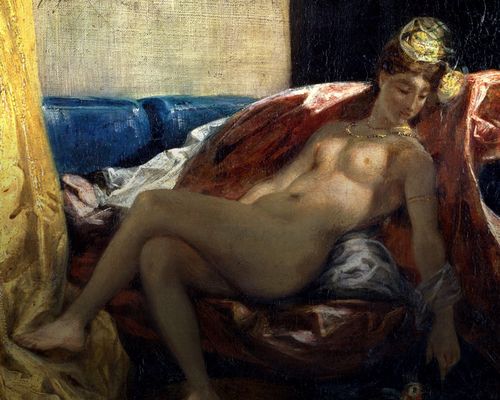More actions
Created page. |
m Updated cat. |
||
| (2 intermediate revisions by the same user not shown) | |||
| Line 1: | Line 1: | ||
{{ | {{jt|title=Frames in Kafka’s ''Metamorphosis''}}<br /> | ||
{{Big|A note on literal and figurative frames in Kafka’s novella.}} | {{Big|A note on literal and figurative frames in Kafka’s novella.}} | ||
{{dc|I}}n reading Kafka’s ''Metamorphosis'' for class last week, I noticed that the novella is framed in a way that highlights one of its central — if not the central — thematic concerns of the text. Figuratively, frames are a way to organize and structure reality. If you consider a photograph, it is framed or composed in such a way as to present the real world in an organized and predictable fashion. Its frame includes certain elements while it excludes others. All of the components of the text (novel, photograph, poem, film, etc.), then, tell a unified story which is often an expression of the values of the framer (artist, writer, photographer, etc.). | |||
[[File:Reclining-nude.jpeg|thumb|500px]] | |||
Kafka presents Gregor’s metamorphosis in such a way, and he gives textual clues to this rhetorical function based around how women are framed in the narrative. | Kafka presents Gregor’s metamorphosis in such a way, and he gives textual clues to this rhetorical function based around how women are framed in the narrative. | ||
| Line 26: | Line 26: | ||
[[Category:11/2008]] | [[Category:11/2008]] | ||
[[Category: | [[Category:Franz Kafka]] | ||
Latest revision as of 10:39, 28 May 2022
Frames in Kafka’s Metamorphosis
A note on literal and figurative frames in Kafka’s novella.
In reading Kafka’s Metamorphosis for class last week, I noticed that the novella is framed in a way that highlights one of its central — if not the central — thematic concerns of the text. Figuratively, frames are a way to organize and structure reality. If you consider a photograph, it is framed or composed in such a way as to present the real world in an organized and predictable fashion. Its frame includes certain elements while it excludes others. All of the components of the text (novel, photograph, poem, film, etc.), then, tell a unified story which is often an expression of the values of the framer (artist, writer, photographer, etc.).

Kafka presents Gregor’s metamorphosis in such a way, and he gives textual clues to this rhetorical function based around how women are framed in the narrative.
The novella begins with Gregor waking into a nightmare. The first paragraph is a surrealistic expression of his new situation as a vermin. Gregor immediately tries to comes to terms with his uncertainty by looking around his small room — by looking to his comfortable and the predictable “normal human room.” Almost immediately, his eyes land on
| “ | the picture that he had recently cut out of a magazine and mounted in an attractive gilt frame. It showed a lady in a fur hat and boa, sitting up straight and holding out an enormous fur muff that entirely concealed her forearms. | ” |
Why is this here? It seems an unnecessary detail in light of Gregor’s situation. It does express certain characteristics of Gregor that are important to understand his change. Notice that the suggestive picture (is she naked other than the boa, hat, and muff?) has been framed in gilt — something plated in gold to look more valuable than it is. Perhaps this is Gregor’s attempt to bring artistic merit to a centerfold? More likely, it betrays his propensity to control.
Gregor also frames his family: his mother is sick and needs help; his father is feeble and no longer able to work; his family has a mysterious debt to his employer that he must help them with; his sister needs to develop her musical abilities. Gregor paints himself as the family’s savior, but he also subordinates them to his life, marginalizing their capacities as human beings in favor of his framing of reality.
Compare the gilt frame with another framing at the end of the novella. Gregor has died a lonely and prolonged death, and his family are now ostensibly free of his control. The novella closes with a framing of Meg (Grete in some translations), Gregor’s sister:
| “ | Mr and Mrs Samsa, watching their daughter become increasingly animated, were struck almost simultaneously by the realization that in recent months, despite all the troubles that had drained the color from h er cheeks, she had blossomed into a beautiful, full-bosomed girl. Speaking more quietly now, and communicating almost unconsciously through glances, they thought about how the time was also coming when they must start looking around for a nice husband for her. | ” |
There’s a sinister quality here in their innocent-seeming thoughts. Yet, there is, perhaps, an inappropriate emphasis on her sexuality; they begin to frame her as a young woman of marrying age. They begin to write her future. Now that they themselves are free of Gregor’s power over them, they begin to assert their power on Meg.
Kafka seems to be commenting on the subtle and profound power of ideology in narrative.
